The Cretan Music from Antiquity to Modern Times
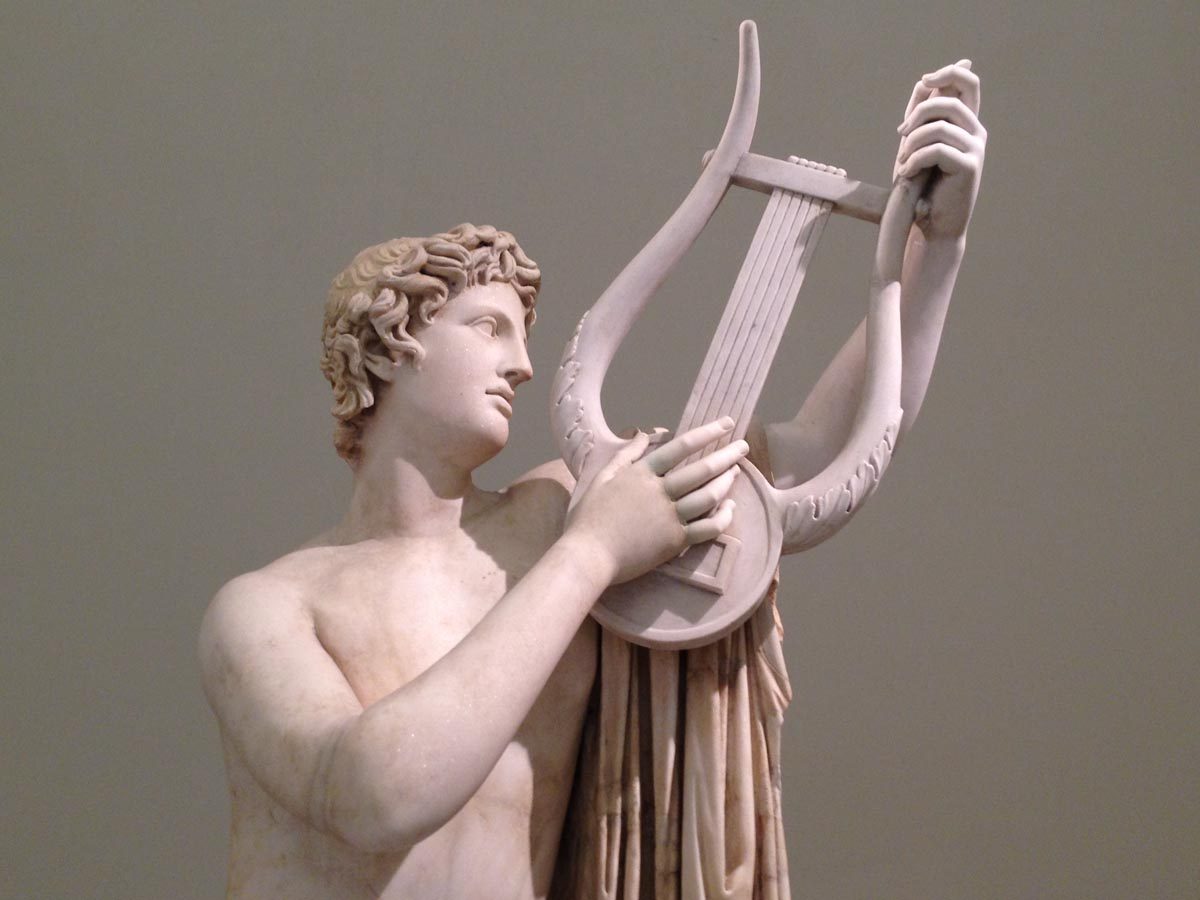
In our ‘musical’ article we wish to share with you the extraordinary journey of the Cretan Music from antiquity to modern times.
Crete and Music Tradition
Cretan music is widely known not only in Crete but also around the world. The Cretan people, expressive and artistic by nature, had developed from prehistoric times a remarkable musical tradition. This musical heritage had entered dynamically in worship ceremonies, celebrations, and other social events since the Minoan Era. In later times, the Cretans have marched in battle to the sound of the Cretan Lyra, a custom that lasted until the 20th-century times of revolution. After the battle, the revolutionaries used to bring the Cretan Lyra with them and danced. This element shows the long and indestructible power of Cretan song and dance in the course of thousands of years.
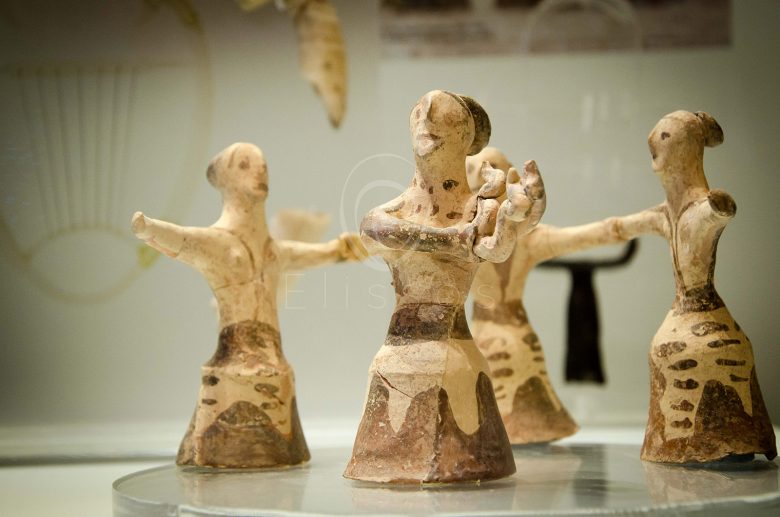
The Cretan Music in Prehistoric Times
Archaeological Musical Findings
From antiquity, the cultivation of music in Crete had a special place. From the archeological excavations (Knossos, Phaistos, etc.) and the ancient texts, we get valuable information. Representations (sculptures, ceramics, paintings) depict musicians and dancers that refer to the present era, where the lyre player plays in the middle and the dancers dance around him. In the Archaeological Museum of Heraklion, a flute is preserved with rings that move to cover the holes to give the notes. From the ancient Drama, we learn that “Minos ordered to be buried with his son Glafkos and his flutes, which he loved while he lived”. Elsewhere are depicted flutes, cones, and trumpets. The ancient “kitharis” (guitar) was not beloved in Crete, but the ancient lyre was played, as can be seen from representations in writings, frescos, and seals.
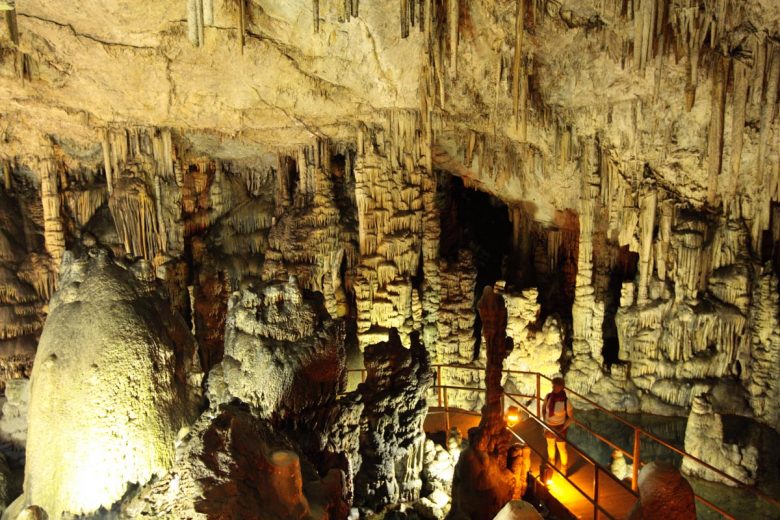
The Cretan Music in Greek Mythology
The roots of Cretan music lay in classical antiquity and Cretan myth. An example of Cretan myth was when Rhea, in order to prevent her husband Kronos from hearing the cries of their infant Zeus, trusted the Koryvantes and the Kourites who played drums, cymbals, and other instruments causing a demonic noise. This proverbial and primitive music is probably the forerunner of Cretan music. The percussion instruments they used were the first Cretan instruments. Despite the successive conquests of Crete from time to time, despite the oppressions of the conquerors, the Cretans fanatically kept their music intact.
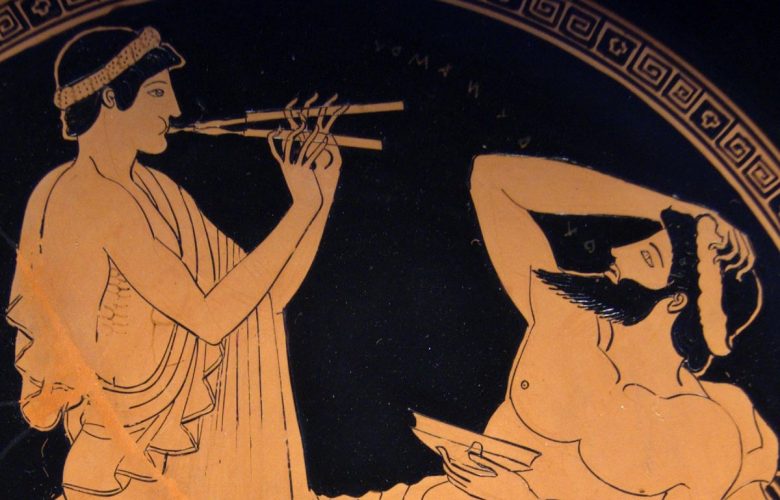
The Cretan Music in Greek & Roman Times
The Ancient Greek World Embraces the Cretan Music
The lomg and deep musical education of the ancient Cretans is revealed by the fact that when the Cretan legislator and musician Thalitas from Gortyna was invited to Sparta in the 8th BC. century, transmitted all the musical wealth of Crete there and created, as Plutarch mentions the “second musical situation” in Sparta by introducing the use of the Phrygian flute (brought to Crete by the Koryvantes and Kourites) so to combine it with the guitar of mainland Greece and teaching “pyrrichi”, a very technical dance of Crete. Thus, perfecting the sub-principles (music-dance-poetry) with rules imposed the Cretan rhythms.
The melodies of the Cretan Thaletas were heard and after 200 years, it is said that Pythagoras was pleased to hear them. After the descent of the Dorians, the ancient descendants of the Minoans were confined to Eastern Crete, the so-called Eteocretans where they saved their ancient music.
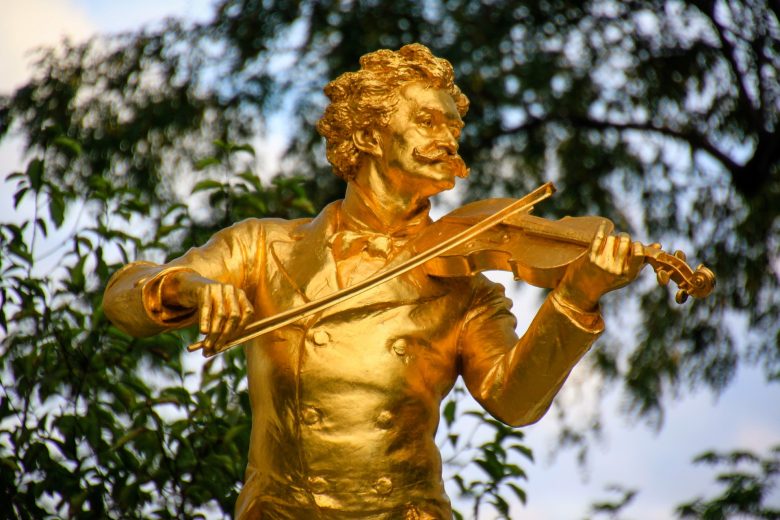
Influences from the West and East
The 13th Century – The First Rhymes
Although Crete has had bridges since antiquity that connected the musical world of the East, at the same time the influences of the West appeared. The Franks, Genoese, and Venetians occupying almost the entire Aegean after the Crusades brought with them melodies, musical and poetic forms such as rhyme. They brought dances such as ball, and musical instruments such as the violin, which will also play an important role in Cretan music.
The 14th Century – The Birth of the ‘Mantinada’
Of particular importance is the predominance of rhyme in the form of rhyming couplets. They first appeared at the end of the 14th century AD. in the art poetry of Crete. The Cretans assimilate this foreign loan of rhyme. They creatively combine it with the iambic fifteen-syllable Greek verse that already existed by Aristophanes. This creative combination is called ‘mantinada’. A verse that particularly favors the musical and poetic improvisation for which we all know the love of the Cretans. After the conquest of the city by the Ottomans, several teachers of church music, leaving Constantinople, settled in Crete. Through the schools they establish over time, Byzantine music is taught systematically on the island while famous Venetian musicians come to Chandakas to entertain its inhabitants.
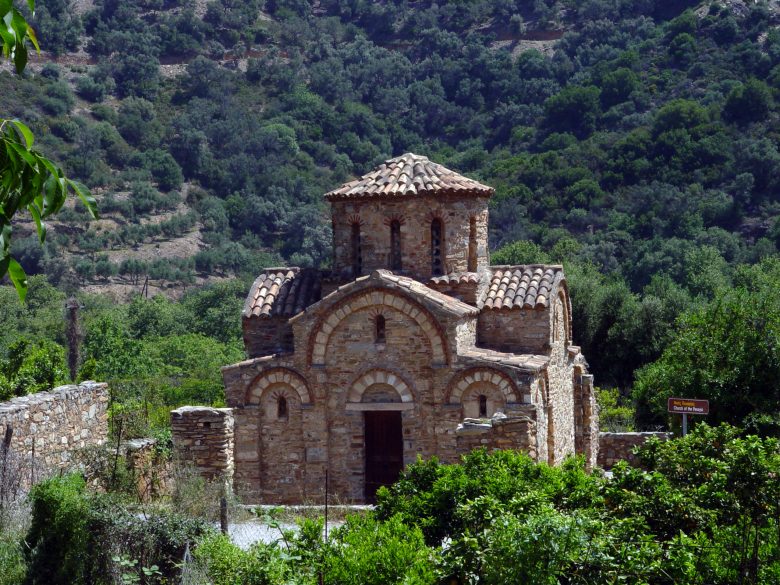
The 15th & 16th Centuries – The Rise of the Byzantine Musical Heritage
Crete remained under Venetian rule after the Genoese occupation (1204-1646). This perpetuated the Greek-Byzantine musical heritage in a freer environment. The teachers of church music from the city such as Manuel Chrysafis, Akakios Chalkiopoulos, founded schools of Greek – Byzantine music. From there great melodists such as Kosmas Varanis, the Episkopopoulos brothers, Dim. Damias emerged.
Already at that time, the results of these influences have begun to be conceived, while already in 1547, the French doctor Pierre Bellon describes the armed dances of the Cretans and in 1599 the Englishman Sherley speaks of evening entertainment with lively dances in the streets. It was at this time as a result of this musical “pregnancy” that the leading Cretan composer of the time, Frangiskos Leontaritis, appeared, the first representative of modern Greek music. At the same time, many young musicians appear in Crete who maintain and promote church music on the island.
The 17th, 18th & 19th Centuries – Elements of Radical Folk Music
At the same time (17th century) the oldest surviving musical texts of folk songs of modern Greece were written. They were found in manuscripts on Mount Athos in the Monastery of Iveron and Xiropotamos. Their study led to the conclusion that these are radical songs of Western Crete. Elements of which we find even today on the island. Cretan monks recorded them as they found manuscripts of religious hymns and Troparion. It is a fact that on several islands and not only in Crete, that priests were also among the best singers of folk songs.
The Ottomans conquered Crete in 1646. From then on, Ottoman authoritarianism ruled. Nevertheless, the Cretans did not stop singing the few joys and the excess sorrows. It is the time when the great music teacher George Kris lives and proves the Byzantine religious tradition of the island. The presence of the Cretan Lyra in the 17th Century becomes more and more intense until the end of the 18th century.
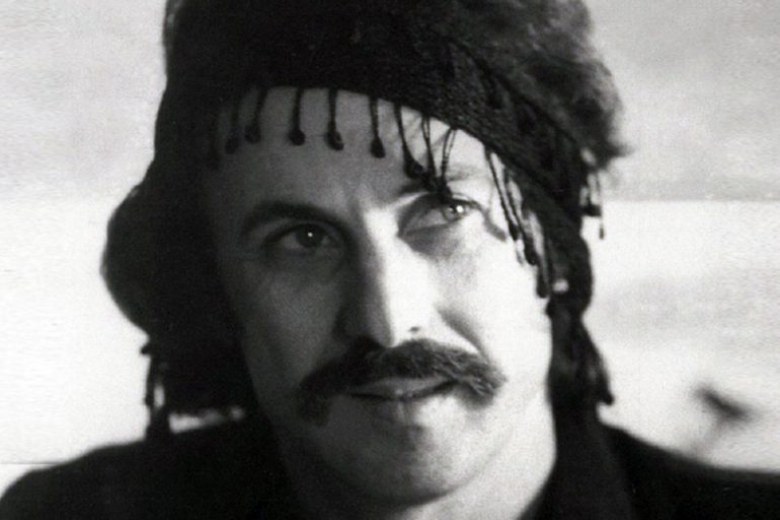
20th Century – The Rebirth of Cretan Traditional Music in a Free Land
After the departure of the Ottomans from the island, the Cretan people started to feel free again. They were full of desire to prevail again in all sectors, including music. And they would do this from scratch. The centuries that have passed have left a huge musical heritage to the Cretans.
From the beginning of the century, the young musicians who appear at the forefront of the Cretan music scene are many. Professionals are few, but their love and creative spirit overshadow their non-professional involvement with music. The sounds and melodies that are born during this period are both old and new.
Thus, appears a new generation of musicians who will change the flow and dynamics of music in Crete. Cretans organize feasts and celebrations all over the island. Many of these musicians have already become famous! Playing in various areas of the island, transmitting their sounds, while capturing the sounds of each place they pass. This musical flair becomes even more intense with the invention of the radio. Psiloritis and Anogia, Kissamos in Chania, and some other areas on the island become metropolises of Cretan music.
Until the first half of the last century, the so-called “masters” of Cretan music are in full swing. Among them are some who sealed the next generations with their presence. Such as Nikos Xyloyris, Andreas Rodinos, Baxevanis, Kareklas, Charilaos, Fustalieris, Koutsourelis, and other lesser-known but important organ players.
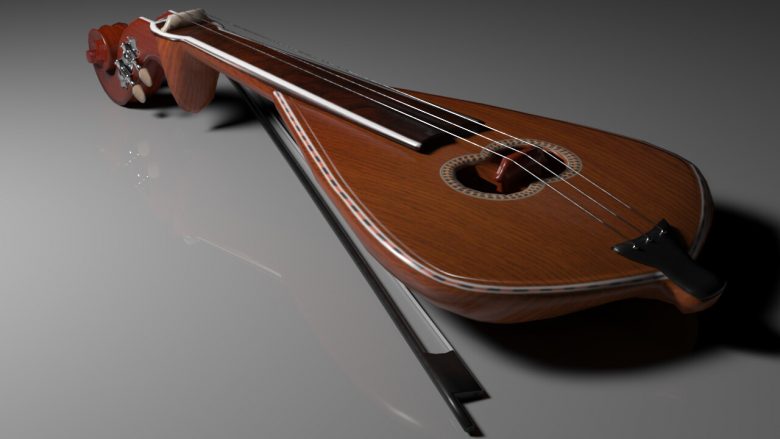
Main Instruments of Cretan Music
The Cretan Lyra
The main instrument of Cretan music, the Cretan lyra, takes its final pear-shaped shape after the Second World War, a time when the basic sounds of Cretan music as we know it today are formed. The baton is taken by another generation of great artists such as Naftis, Skordalos, Mountakis, Leonidas Klados, and others who become the teachers and inspirers of the next generation that was sealed by the presence of Nikos Xylouris of ‘Archangel’ of Cretan music, who died at the peak of his creativity. Nikos Xylouris’ brother, Antonis or “Psarantonis“, continues with his brother Giannis and his children the great musical tradition of the Xylouris family.
Other Cretan Musical Instruments
Although the Cretan Lyra is undoubtedly the king or queen of Cretan music, other instruments are also of interest. Thus, the lute in the hands of important instrumentalists ceases to be a simple accompaniment instrument and also participates in melodic improvisation. In some provinces of the prefectures of Chania, Lassithi, and Heraklion, they play the violin as a traditional instrument. In the past, ‘bulgari’, a kind of tambourine with a very characteristic sound, was also very common. The wind instruments also play an important role in Cretan music; the simple pastoral ‘thiambol’, a kind of flute, the ‘madura’, a type of clarinet, and the ‘ascomandura’ a Cretan variation of the bagpipes. In eastern Crete, they play the violin or the lyre to accompany the ‘daoulaki’, a small drum.
The violin in the Lassithi province sometimes had the guitar as a musical accompaniment. The old Cretan Lyra players accompanied the melody of the Lyra with small spherical bells that were fastened along with the bow of the Lyra. The name ‘Gerakokoudouna’ comes from the Byzantine years. These were the bells that hunters hung on the necks of domesticated hawks that were hunting birds. The mandolin is also widespread in some areas of Rethymnon melodic musical instruments with the forms of Cretan mandolin and mandola.
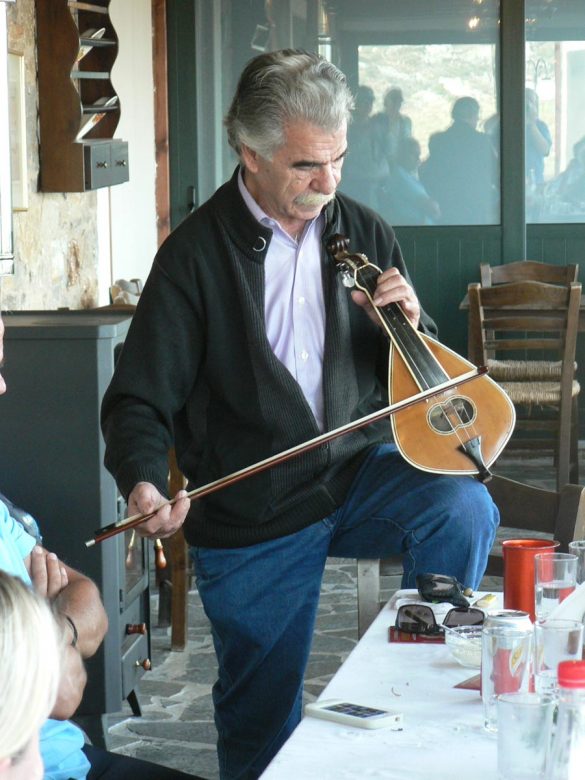
Cretan Music in Modern Times
Today there are many great musicians, many of whom are famous outside Crete. Nowadays there is a continuation of traditional Cretan music in artistic pursuits in combination with the creative dialogue with the musical traditions of the eastern Mediterranean.
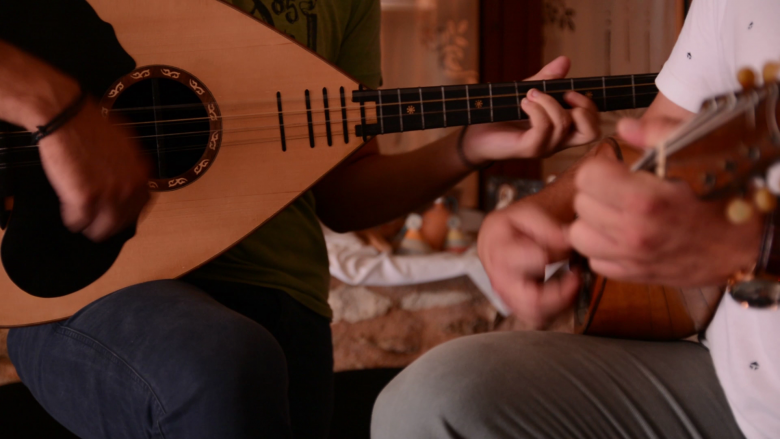
Elissos Brings Cretan Music to Life through Unique Experiences
The Tastes and Sounds of Crete Experience
The Tastes and Sounds of Crete Experience is all about tradition, local food, and Cretan music! From the traditional off the beaten track village in Central Crete that you visit, the traditional live music and dances that you learn the steps to, the local products that you taste, to the unique traditional architecture and byzantine churches you explore, this tour harmoniously showcases what Traditional Crete is all about! Click on the link to learn more and book this tour!
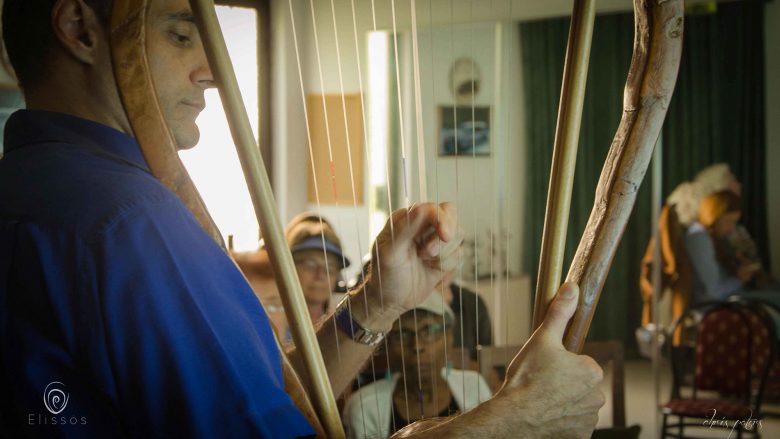
Meet the Minoan Civilization and Ancient Greek Music
You will start your day visiting the most important archaeological site on Crete; the Minoan palace of Knossos, the mythical Labyrinth of Homer. Complete your journey into prehistoric times by visiting the biggest prehistoric collection of artifacts in Greece; the Archaeological Museum of Heraklion. A short walking tour in the old, historic section of the town of Heraklion will follow. At lunchtime, experience the Cretan cuisine in one of the places where the locals would go for a meal. Finally, become a musician in a private studio. Enjoy an hour and a half workshop on Ancient Greek Music, in theory, and practice. Click on the link to learn more and book this unique tour!
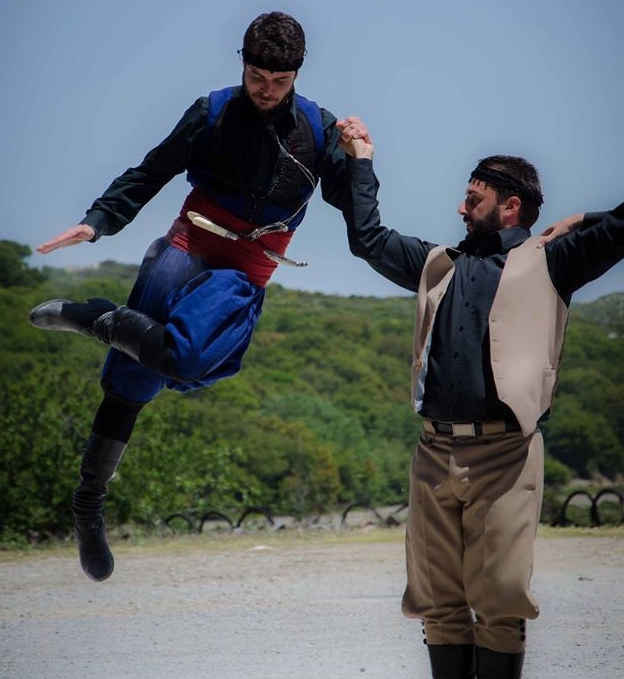
Steps of Cretan Folk Dances – Blog Article
Wishing to learn more on how the steps of Cretan Folk Dances evolved from the past to the present? The Cretans love to keep their ancient traditions alive! Do you wish to find out how the Cretans channeled the Minoan dance traditions and created new forms of dance? Then, Click here to read our article on the evolution of Greek Dance through time.
Join us and let us create for You the Cretan Dance Experience or Event of your Dreams!
